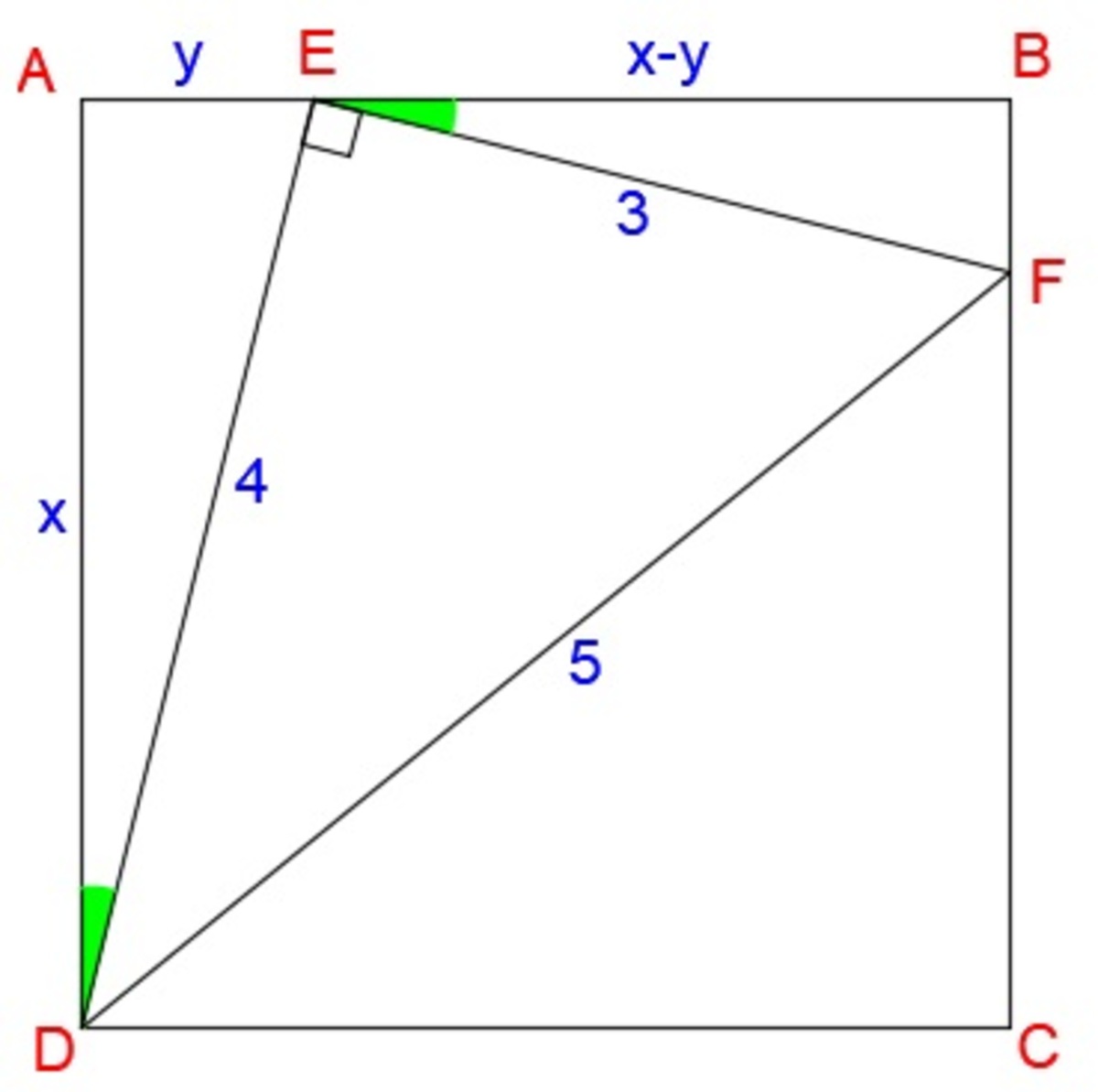Right Triangle Inscribed in a Square
In the diagram above, △ D E F is a right triangle inscribed in square A B C D . If F E = 3 and E D = 4 , then what is the area, to three decimal places without rounding, of square A B C D ?
The answer is 15.058.
This section requires Javascript.
You are seeing this because something didn't load right. We suggest you, (a) try
refreshing the page, (b) enabling javascript if it is disabled on your browser and,
finally, (c)
loading the
non-javascript version of this page
. We're sorry about the hassle.
2 solutions
There are 2 solutions of positive triplets ( a , x , y ) that satisfies all the 3 equations above, ( a , x , y ) = ( 1 7 1 6 , 1 7 4 , 1 7 1 3 ) , ( 6 5 1 6 , 6 5 2 8 , 6 5 3 7 ) .
You still need to add a condition that x and y are smaller than a .
 Let
A
D
=
x
and
A
E
=
y
, then
E
B
=
x
−
y
. Since
△
A
D
E
∼
△
B
E
F
, we have
Let
A
D
=
x
and
A
E
=
y
, then
E
B
=
x
−
y
. Since
△
A
D
E
∼
△
B
E
F
, we have
4 x = 3 x − y
3 x = 4 x − 4 y
x = 4 y
y = 4 x
Apply pythagorean theorem on △ D A E , we have
x 2 + y 2 = 4 2
x 2 + y 2 = 1 6
Substitute y = 4 x to the above equation, we have
x 2 + ( 4 x ) 2 = 1 6
x 2 + 1 6 x 2 = 1 6
1 6 1 7 x 2 = 1 6
x 2 = 1 7 2 5 6 ≈ 1 5 . 0 5 8 8 2 3 5 3
Relevant wiki: Pythagorean Theorem
⎩ ⎪ ⎨ ⎪ ⎧ a 2 + x 2 = 4 2 a 2 + y 2 = 5 2 ( a − x ) 2 + ( a − y ) 2 = 3 2 . . . ( 1 ) . . . ( 2 ) . . . ( 3 )
Solving the system of equation, we have a ≈ 3 . 8 8 0 5 7 and area of square A B C D , a 2 ≈ 1 5 . 0 5 9 .